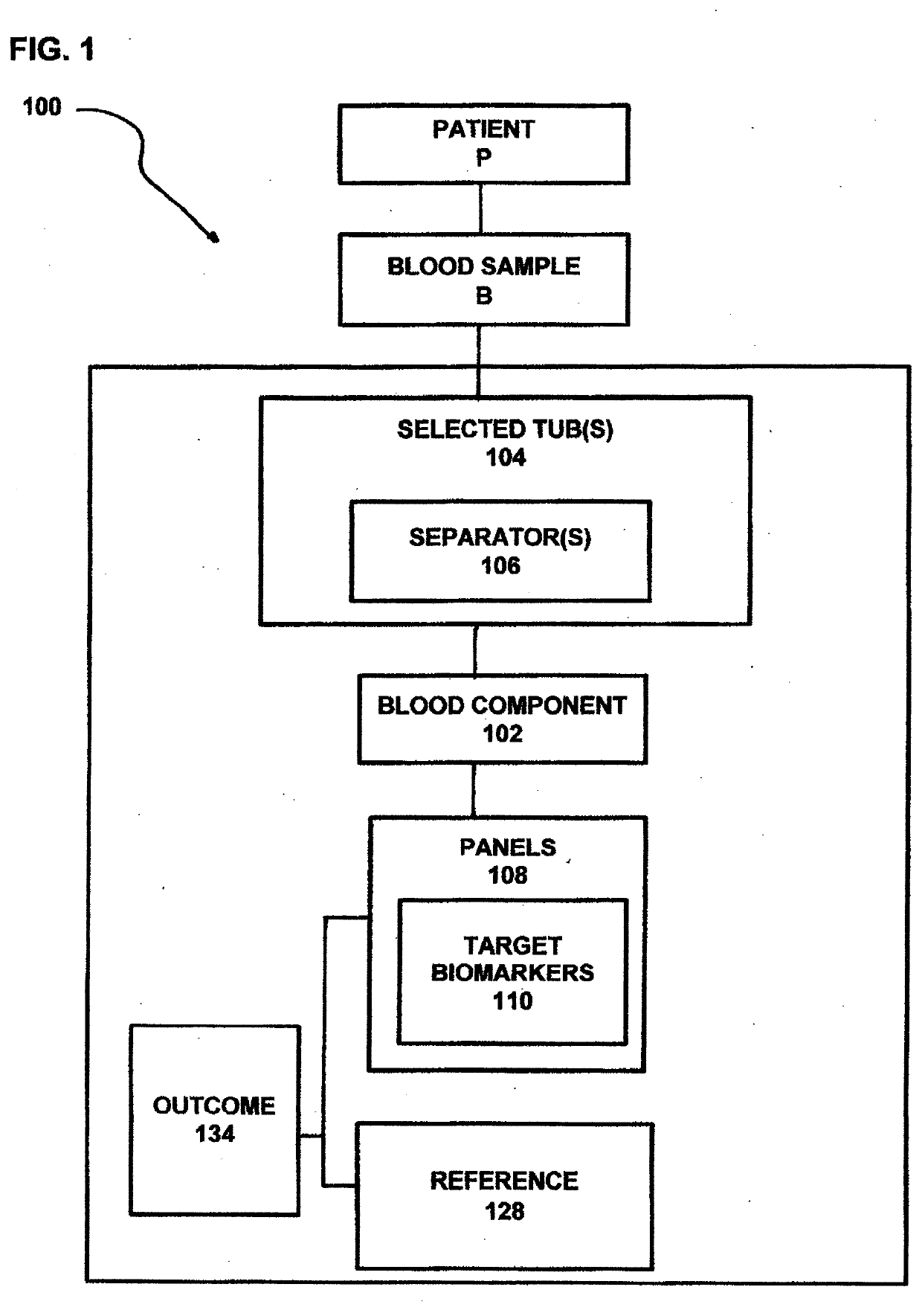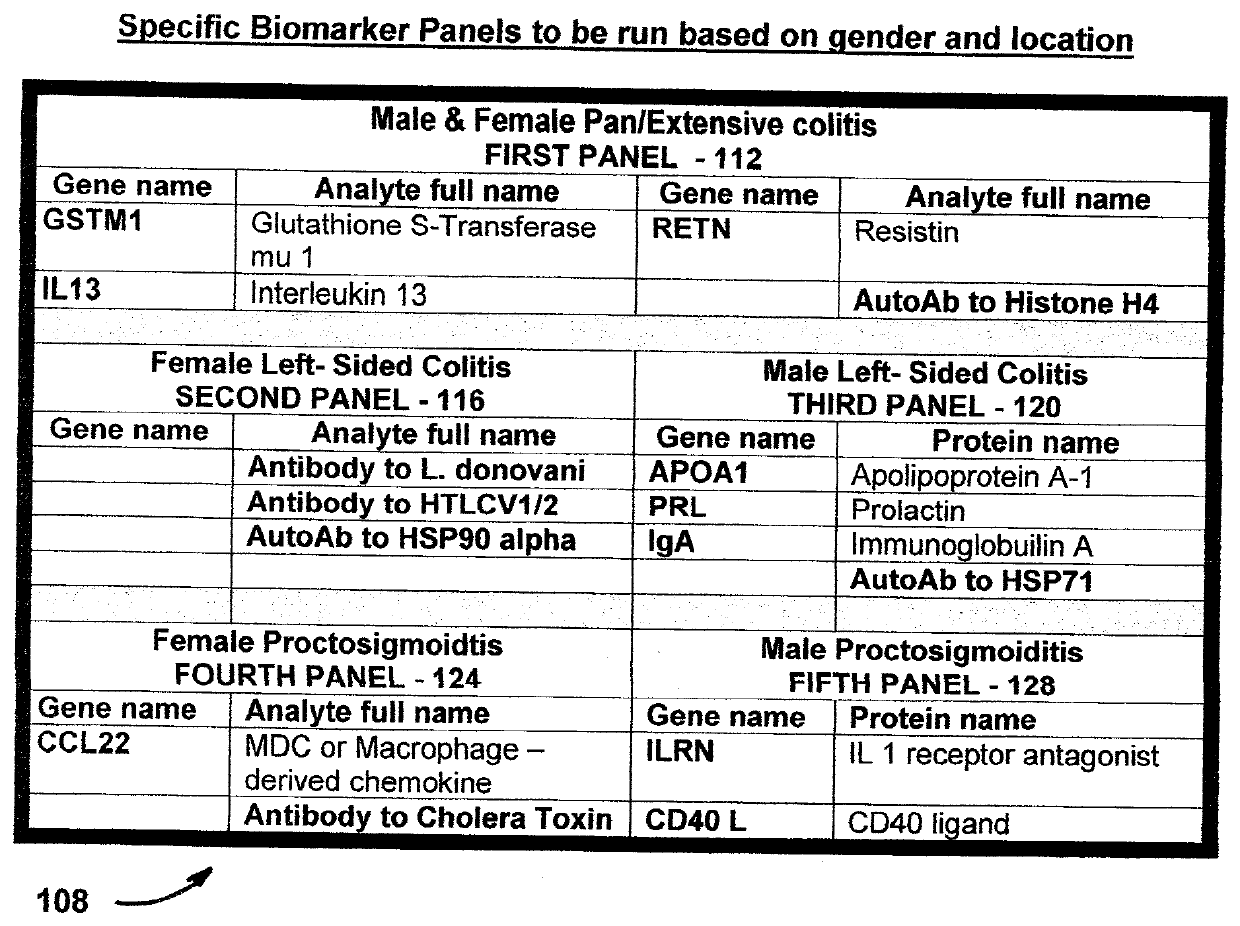Process and system for identifying individuals having a high risk of inflammatory bowel disease and a method of treatment
- Summary
- Abstract
- Description
- Claims
- Application Information
AI Technical Summary
Benefits of technology
Problems solved by technology
Method used
Image
Examples
Embodiment Construction
[0095]Using mesalamine to treat active UC is associated with clinical treatment failures in 60% of patients with moderate UC, compared to 80% of those treated with placebo. Due to the lack of understanding of disease pathophysiology, until now, mesalamine treatment did not take gender difference into consideration nor the locations of the disease within the colon. Patients, such as those with left-sided colitis and proctosigmoiditis are difficult to manage clinically. However, patients with proctosigmoiditis do not have greatly increased predilection to developing colon cancer. This is different from those patients with pancolitis and extensive colitis that have significantly higher risk of developing colon cancer. Therefore, it is desirable to have a process and system that are effective for use in specifically predicting mesalamine treatment responses for subgroups of patients having UC as well as for use in developing effective strategies for the treatment of patients suffering f...
PUM
 Login to View More
Login to View More Abstract
Description
Claims
Application Information
 Login to View More
Login to View More - R&D
- Intellectual Property
- Life Sciences
- Materials
- Tech Scout
- Unparalleled Data Quality
- Higher Quality Content
- 60% Fewer Hallucinations
Browse by: Latest US Patents, China's latest patents, Technical Efficacy Thesaurus, Application Domain, Technology Topic, Popular Technical Reports.
© 2025 PatSnap. All rights reserved.Legal|Privacy policy|Modern Slavery Act Transparency Statement|Sitemap|About US| Contact US: help@patsnap.com



